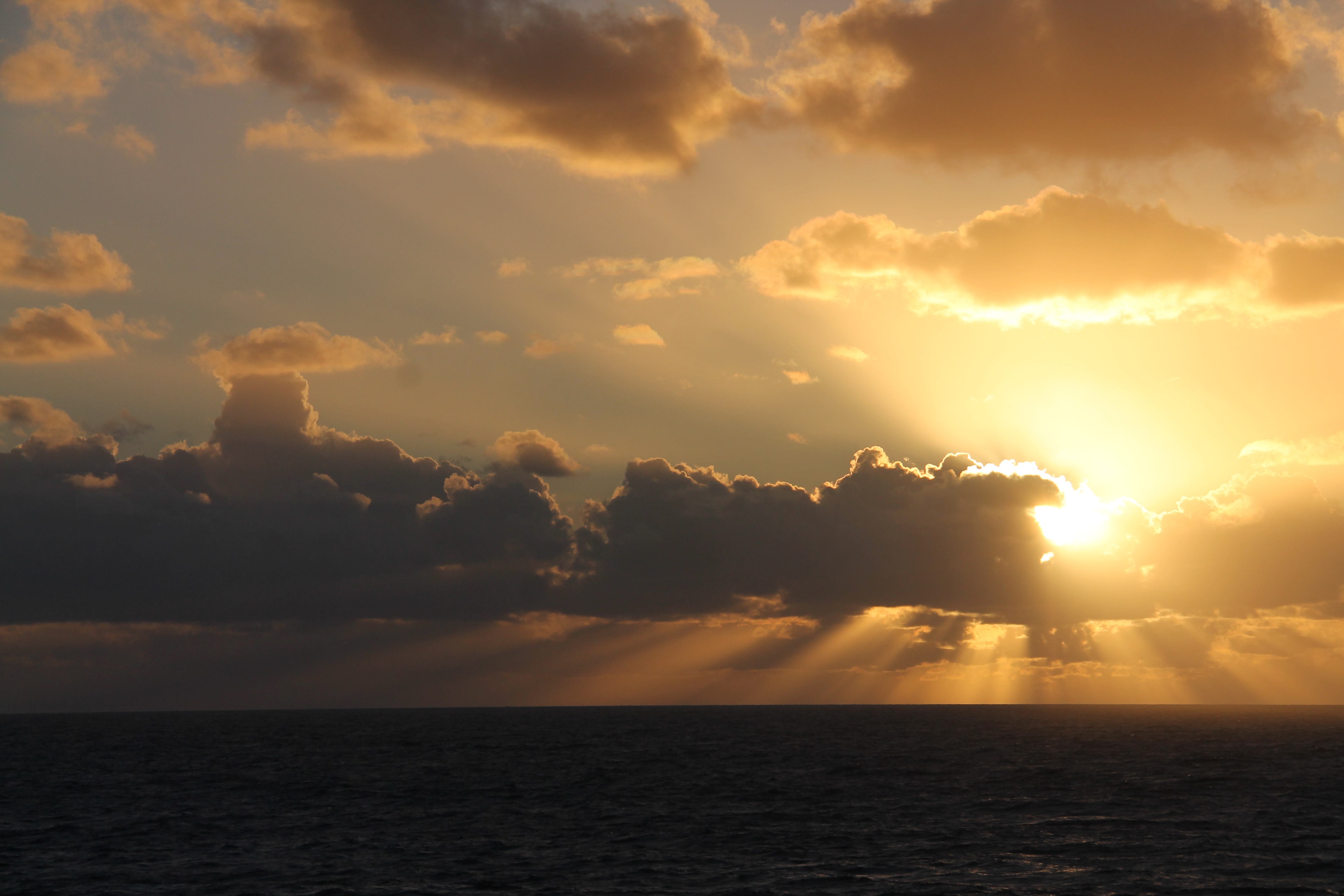Well, during the night the sea began to kick up. With the Great Barrier Reef to the east and the Australian mainland to our west, we figured on an easy ride. But now the winds have shifted to the southeast at 30 knots and our heading is southeast at 17 knots. So the waves are coming right at us and the ship is pitching.
The sunrise is beautiful, though, and we have some interesting lectures to attend or listen to. Steve is really looking forward to a special 10:00AM lecture by Reef Pilot Warwick Conlin entitled “Reef Pilotage: The Ships, The Stories.” Cathy is intrigued by a lecture by Enrichment Lecturer Bill Lee with the subject “Hollywood Science Fact, Fiction & Fantasy.




But first Cathy has a haircut at Canyon Ranch SpaClub, and she is not looking forward to it. The SpaClub is on Deck 9 right in the bow of the ship where the pitch in this weather can be felt the most. At 9:00am she goes up there and is really glad that it only takes about twenty minutes. She is back to our stateroom and declares that there is no way she is going to go to Insignia Lounge – also right in the bow on Deck 5 – for a lecture. She’ll watch it on television.
But Steve heads down there. The lecture is fantastic. Warwick Conlin has been a reef pilot for thirty years. Now this is a small group of folks who are employees of a private company called Australian Reef Pilots, one of two companies that provide the forty or so pilots that help ships navigate between Brisbane in the south and Darwin in the northwest and Papua, New Guinea in the northeast. Any cargo vessel over 70 metres in length requires a reef pilot if traveling between these places because of the proximity of the Great Barrier Reef, which lies 50 miles offshore in this area (Darwin to Cape York is a different story – navigating the area at the tip of Cape York is extremely tricky, so these pilots cover this area as well).
As Warwick states early on: their only role is to protect the Great Barrier Reef. It is one of only a dozen Particularly Sensitive Sea Areas in the world. One other major role is to help ships navigate the Torres Strait at the top of Cape York. In places the depth is only 12.5 meters, so guiding ships drawing close to that is ultra critical.
He spends time describing the GBR itself, which we have done on the previous day’s post. He then changes to a different and equally interesting topic (to Steve anyway): the types of ships he pilots. There are eight that transit the area he serves: 1) car carriers some of which are capable of carrying 5-6,000 cars on 13 decks; 2) small cruise ships 100 meters in length or more; 3) refrigerated ships, most of which serve the fishing fleets in Thailand; 4) bulk carriers that carry anything from grain to ore to steel beams; 5) log carriers that move from New Zealand to China, some of which he says are in bad shape; 6) container ships; 7) private yachts that are 100 metres or more; and 8) ships carrying cows and sheep. Some can carry 5,000 cows or 40,000 sheep.
After his prepared talk, he takes questions for another half hour. He describes accidents (there are few but they do happen), the results of those accidents and the fines levied; navigating the Torres Strait, the schedules that these reef pilots keep and many other topics. I could have listened to him all day.
I return to our stateroom and Cathy has this very lecture on the television so we watch it and then go to Waves Grill for lunch.
At 2pm, Cathy watches (in the room, in the bed, it’s pitching something awful!) Enrichment Lecturer Bill Lee’s presentation on Hollywood’s handling of scientific matters. [He talks about different movies and TV shows. He said that “Back to the Future” got the physics right. No wonder I couldn’t understand it. “Star Trek” (all of them, TV shows and movies) is science fiction. Warp drive is theoretically possible, but the energy required to create a warp field would be impossible to generate. “Yeah, now. Maybe not in the future,” one audience member said. The transporter is also theoretically possible but it would be almost impossible to keep all of our atoms in a cohesive pattern once they were converted to energy. That’s what Mr Scott means when he says “I’m losing their patterns, Captain!” And as for Star Wars, he said it was pure fantasy. Especially the famous line by Han Solo: “My ship, the Millenium Falcon, did the Kessel run in less than 12 parsecs.” Bill reminded us that a parsec is a unit of distance, not time. So saying you did the Kassel run in less than 12 parsecs is like saying you did the Boston Marathon in less than 26 miles.” But as my son-in-law Keith pointed, Princess Leia floating though space and saving the fleet was against the laws of physics AND biology!]
The sea continues to churn on into the evening. We will have to see if it has an impact on our arrival in Brisbane tomorrow scheduled for 8:00am.






Pat Kohl
May 23, 2018Yet another gorgeous sunrise! How lucky you are!